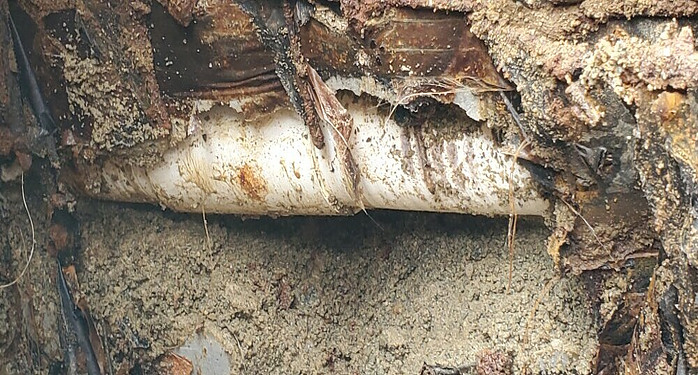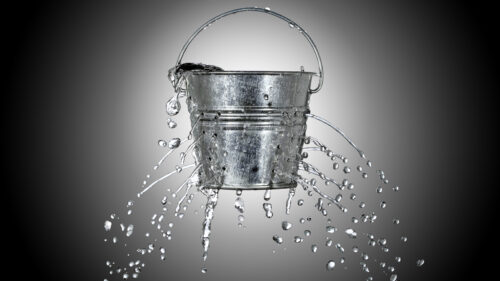
Detecting leaks in your pool is a big deal. Ignoring a leak can do more than just raise your water bill; it can compromise the entire structure of your pool and potentially turn your backyard oasis into a money pit.
You’re going to find out why prompt leak detection is not just a matter of upkeep but can save you a considerable chunk of change and a lot of headaches down the road.
This isn’t just about the obvious signs like a sudden drop in water level. There are other indicators, which might seem minor, but they’re telling you it’s time to take a closer look.
You might notice your pool’s water level isn’t what it used to be, and sometimes, the surroundings of your pool can give you clues—look for unusually wet soil or areas where the landscaping seems to be washing away.
Your first attempt at figuring this out doesn’t need to be your last, but it’s important to start somewhere. A systematic approach is key, and I’m here to help you with that.
Whether you’re a DIY fan or prefer to call in the pros, understanding the basics of pool leak detection is the first step to maintaining the life of your pool.
Check Out Our Amazon Storefront!
Identifying Potential Leaks
If you suspect your pool is leaking, don’t worry too much about it at first. There’s a straightforward approach to confirm if there’s a problem.
Now, I’m going to walk you through performing a simple water loss test, often known as the bucket test. You’ll want to place a bucket filled with water on a pool step and mark both the water levels inside and outside the bucket.
- Make sure there no rain occurs during the tests. Comparing the two marks after 24 hours can give us a clue if evaporation or a leak is at play.
- Next, you’re going to inspect the pool equipment. Look for any dampness or puddles around the pump, filter, heater, and pipe valves.
Sometimes the issue is as simple as a loose fitting or a degraded seal that you can spot and fix on your own. This isn’t just about finding something obviously wrong; it’s also about spotting small, potentially problematic changes over time.
- Lastly, take a slow walk around the pool area. You want to keep an eye out for any wet spots or soil erosion that isn’t typical after average use or rain.
Particularly focus on places where plumbing runs close to or beneath the pool. Spotting unusual changes in your landscaping, such as saturated ground or a sudden appearance of algae, can be a telltale sign of an underground leak.
The Money-Saving Guide for Pool OwnersLearn how to save money with pool maintenance hacks, the right equipment upgrades, and exclusive discounts for pool supplies.
Advanced Leak Detection Methods
If your initial assessment points towards a leak, you might need to dig deeper with some advanced techniques. This is going to include a range of methods, from the traditional to the technological.
One time-tested method is the dye test. Grab some food coloring or leak-finding dye, and squeeze it near suspected leak points. If there’s a leak, the dye will get sucked into the crack or hole. It’s not just about finding visible cracks; this method helps identify issues you can’t see with the naked eye.
Now, what about electronic leak detection? This isn’t just about fancy gadgets; it’s about precision. Electronic leak detection equipment can pinpoint even the smallest leaks without any guesswork. They use sound or other signals to spot anomalies in your pool’s structure.
Sometimes, it just makes sense to leave it to the pros. If you’re finding the process daunting, hiring a professional leak detector could save time and potentially prevent costly future repairs. They come equipped with experience and specialized tools, such as hydrophones and pressure testing devices.
If you find yourself in need of a professional leak detector in NY, NJ, or CT, your search ends here! For top-tier service and unrivaled expertise, simply click here. Trust us to provide efficient, reliable solutions for all your leak detection needs.
In terms of costs, you’re looking at a spectrum. A DIY dye test will cost little more than a pack of dye, while electronic leak detection and professional services will have a higher price tag. But this isn’t just about the initial cost; think about the long-term savings from accurately fixing the problem.

Proactive Measures to Prevent Future Leaks
I’m going to show you that preventing future leaks is just as crucial as fixing current ones. Regular pool maintenance is your first line of defense. This includes routine checks of the pool’s surface, liner, and structural components.
Choose something that resonates with you when it comes to pool materials and equipment. Invest in quality from the get-go, which can reduce the likelihood of deterioration and subsequent leaks.
You’re going to find out about how the seasons can impact your pool’s structure. Anticipate and plan for these changes to maintain your pool’s condition throughout the year.
Lastly, it’s not just about the physical aspects; user behavior matters too. Educating those who use the pool on best practices can prevent mishaps that may cause leaks. This includes avoiding rough play near delicate pool fixtures and observing weight limits for pool accessories.
I want to take a moment to extend my deepest gratitude to all of you, my loyal readers.
Your insightful comments, queries, and shared experiences continue to enrich our discussions and enhance the quality of our content.
Thank you for being an integral part of this journey.
Here’s to the continued exploration of pool maintenance and leak detection solutions, all made possible by your active engagement and cooperation.
Stay Cool!

